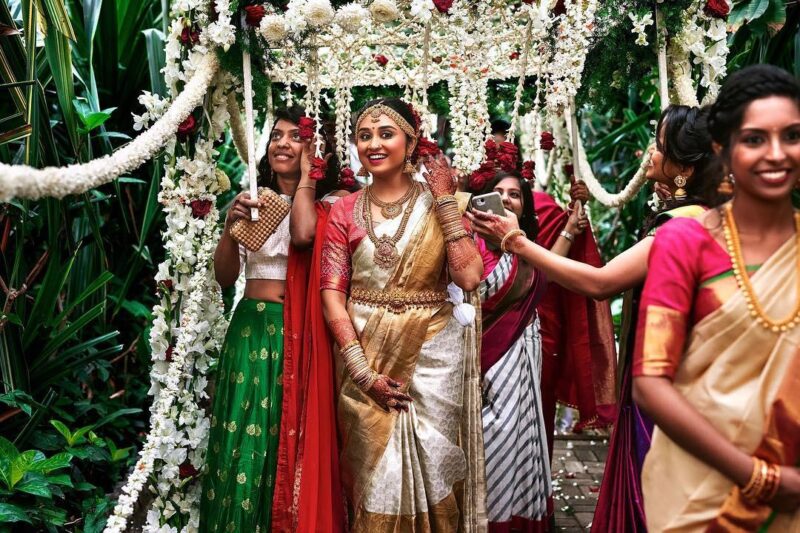The sari, an iconic symbol of Indian culture and elegance, is an unstitched length of cloth that ranges from five to nine yards in length and is traditionally draped around the body in various styles. Revered for its versatility and timeless appeal, the sari is a popular choice among brides for its ability to blend tradition with personal style.
Rooted in ancient Indian tradition, the history of the sari dates back thousands of years and is deeply interwoven with the cultural and social fabric of India. This garment has evolved through the centuries, adapting to changing tastes and trends while maintaining its core identity.
This article aims to explore the diverse world of saris, focusing on the evolving preferences of brides, from heirloom pieces passed down through generations to modern designs that cater to contemporary sensibilities.
Key Takeaways
- Versatility and Tradition of Saris: The sari symbolizes Indian tradition and versatility, blending heritage with modern style. Heirloom saris connect brides to their ancestry but may require careful maintenance and style updates.
- Adaptation to Modern Preferences: Modern brides prefer lighter fabrics and innovative designs for comfort and individuality. Materials like organza and styles like unique drapes cater to these contemporary tastes.
- Balance of Innovation and Authenticity: Hybrid saris and trends like pastels and sequins mix modernity with tradition. This balance offers brides diverse choices that reflect their personal style and cultural heritage.
Heirloom Saris: Preserving Family Heritage
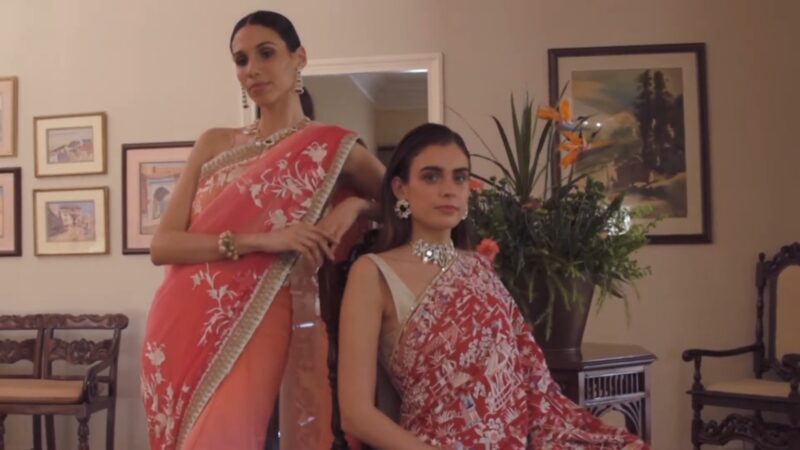
Heirloom saris are not just garments; they are treasured family legacies, imbued with memories and traditions. Passed down from one generation to the next, heirloom saris may include exquisite varieties like the richly woven Benarasi, the intricately dyed Bandhini, or the artistically painted Kalamkari.
These saris serve as a connection to one’s heritage and offer a unique, timeless elegance to the bridal ensemble. However, wearing an heirloom sari comes with its challenges, such as preservation issues and style adaptation to fit contemporary trends, while maintaining the integrity of the garment.
Lighter Fabrics: Embracing Comfort and Elegance
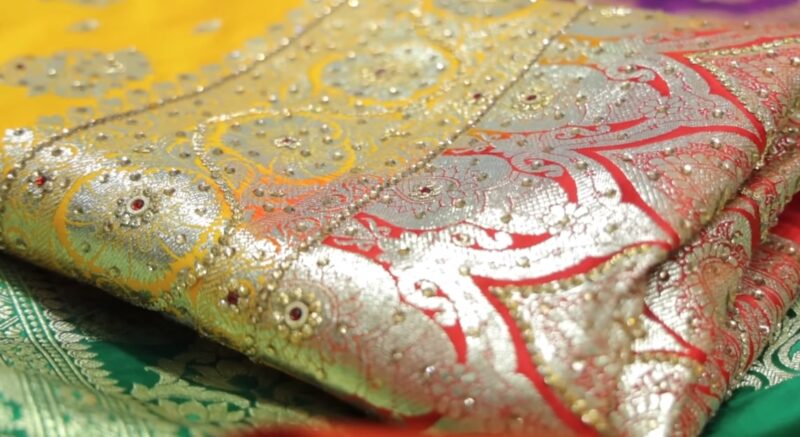
The trend towards lighter fabrics such as organza, chiffon, or georgette reflects modern brides’ preferences for comfort, ease of movement, and suitability to various climates. These fabrics offer a breezy, ethereal look, making them ideal for summer weddings or destination weddings in warmer locales.
While they score high on comfort and convenience, lighter fabrics might lack the opulence of traditional weaves and require careful maintenance to preserve their delicate beauty.
Modern Designs: Bridging Tradition and Innovation
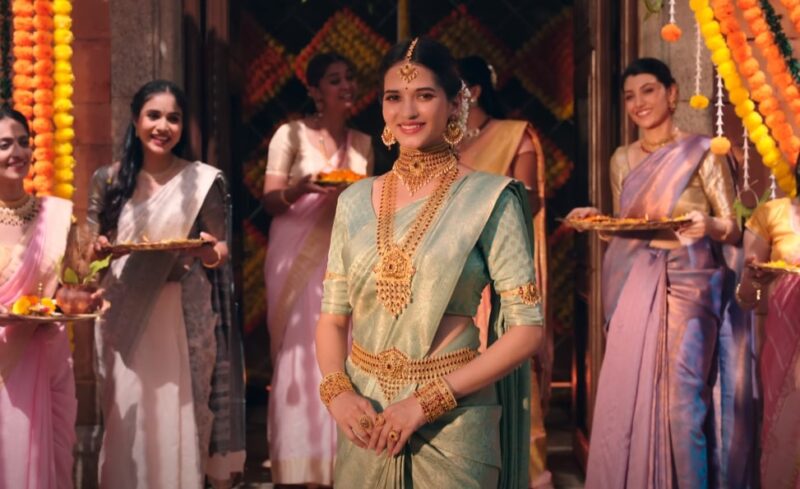
Today’s fashion designers are redefining the sari by experimenting with styles, patterns, and draping techniques. Contemporary draping styles like the butterfly drape or half-sari drape cater to the modern bride’s desire for uniqueness and personal expression.
Fusion blouses, such as off-shoulder, halter-neck, or jacket styles, complement these modern drapes, adding a touch of contemporary chic to the traditional sari. These innovations have expanded the sari’s appeal, attracting a broader audience and offering brides a myriad of choices to reflect their individuality.
Pastels: Soft Shades for Bridal Elegance
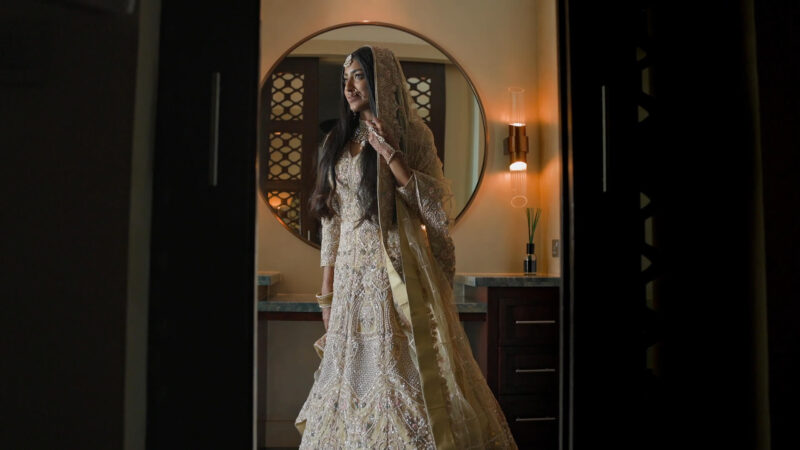
Pastel shades like peach, mint, lavender, and ivory have become increasingly popular for bridal saris, driven by their soft, romantic appeal and versatility. These shades suit a variety of themes and settings, from beachfront vows to royal palace weddings.
While pastels offer a subtle, understated elegance, they contrast with the traditional preference for bold and bright hues, offering brides an alternative palette that reflects their taste and the mood of their special day.
Sequins: Adding Sparkle to Bridal Wear
The incorporation of sequins and metallic embellishments like foil prints, threadwork, and zardozi brings a touch of glamour and festivity to the bridal sari. These embellishments catch the light and add depth and texture to the fabric, enhancing the sari’s overall impact.
However, balancing sequins and metallic details is key to ensuring the sari remains elegant and not overwhelming. Accessorizing wisely and choosing the right amount of sparkle can make a significant difference in the bridal look.
Hybrid Saris: The Best of Both Worlds
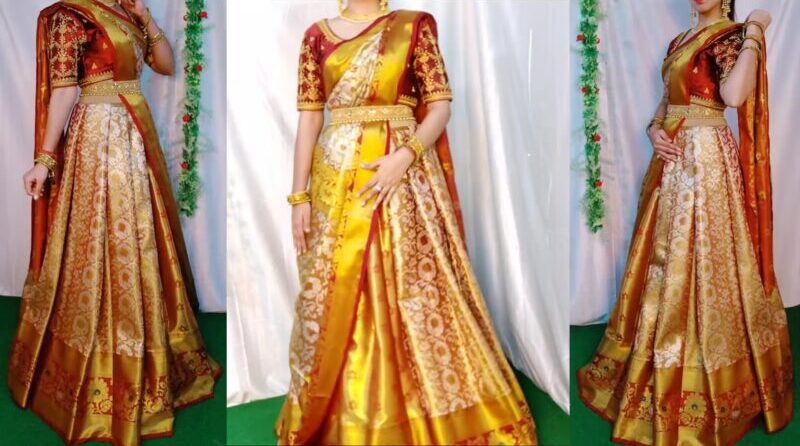
Hybrid saris, such as lehenga saris, sari gowns, or ruffled saris, combine traditional elements with modern flair, offering brides the convenience of pre-stitched designs and unique silhouettes. These innovative creations provide a contemporary twist on the classic sari, making them an excellent choice for brides seeking convenience without compromising on style.
However, while they offer versatility and uniqueness, they may not appeal to purists who prefer the traditional drape and cultural authenticity.
FAQ
What special care should be taken when preserving an heirloom sari for a wedding?
Heirloom saris should be stored away from direct sunlight in a cool, dry place. Wrapping them in muslin or pure cotton fabric helps maintain their condition. Regular, gentle airing and avoiding harsh chemicals are crucial to preserving their integrity for future generations.
Can modern fabrics like organza and chiffon be used for traditional sari designs?
Yes, modern fabrics like organza and chiffon can be adapted for traditional sari designs. They offer a contemporary twist, providing a lighter, more fluid drape while still showcasing classic patterns and embroidery, blending tradition with modern comfort and style.
How do I choose the right sari for a destination wedding?
For a destination wedding, consider the climate and setting. Lighter fabrics, simpler designs, and pastel shades are ideal for beach or tropical locations. A sari with easy drape and minimal embellishments will offer comfort and ease without compromising on elegance.
What are some tips for incorporating sequins into a bridal sari without overdoing it?
To incorporate sequins tastefully, choose a sari with sequined borders or subtle motifs rather than all-over designs. Pairing a sequined sari with a simple blouse and minimal accessories can keep the look elegant and balanced.
How can I modernize an heirloom sari for my wedding while preserving its originality?
Modernizing an heirloom sari can be done by pairing it with a contemporary blouse, like an off-shoulder or halter-neck style, or by adopting a modern draping style. Adding a belt or a chic brooch can also provide a modern touch without altering the sari itself.
Are there specific bridal sari colors recommended for different types of Indian weddings?
While reds and pinks are traditional for Hindu weddings, modern brides opt for a wider palette. Pastels are popular for daytime or spring/summer weddings, while deep hues like royal blue or emerald are preferred for evening or winter ceremonies. The choice increasingly reflects personal taste and wedding theme rather than strict tradition.
Final Words
The world of bridal saris is vast and varied, reflecting the rich tapestry of Indian culture and the individual styles of modern brides. From the timeless beauty of heirloom saris to the innovative designs of modern drapes, the perfect bridal sari balances tradition with personal expression, and comfort with elegance.
As you search for your ideal sari, consider not only the aesthetic but also the significance of the garment, ensuring it resonates with your personal story and the essence of your wedding day. Remember, the right sari is not just an outfit; it’s a reflection of your unique beauty and the timeless tradition you carry forward on your special day.
